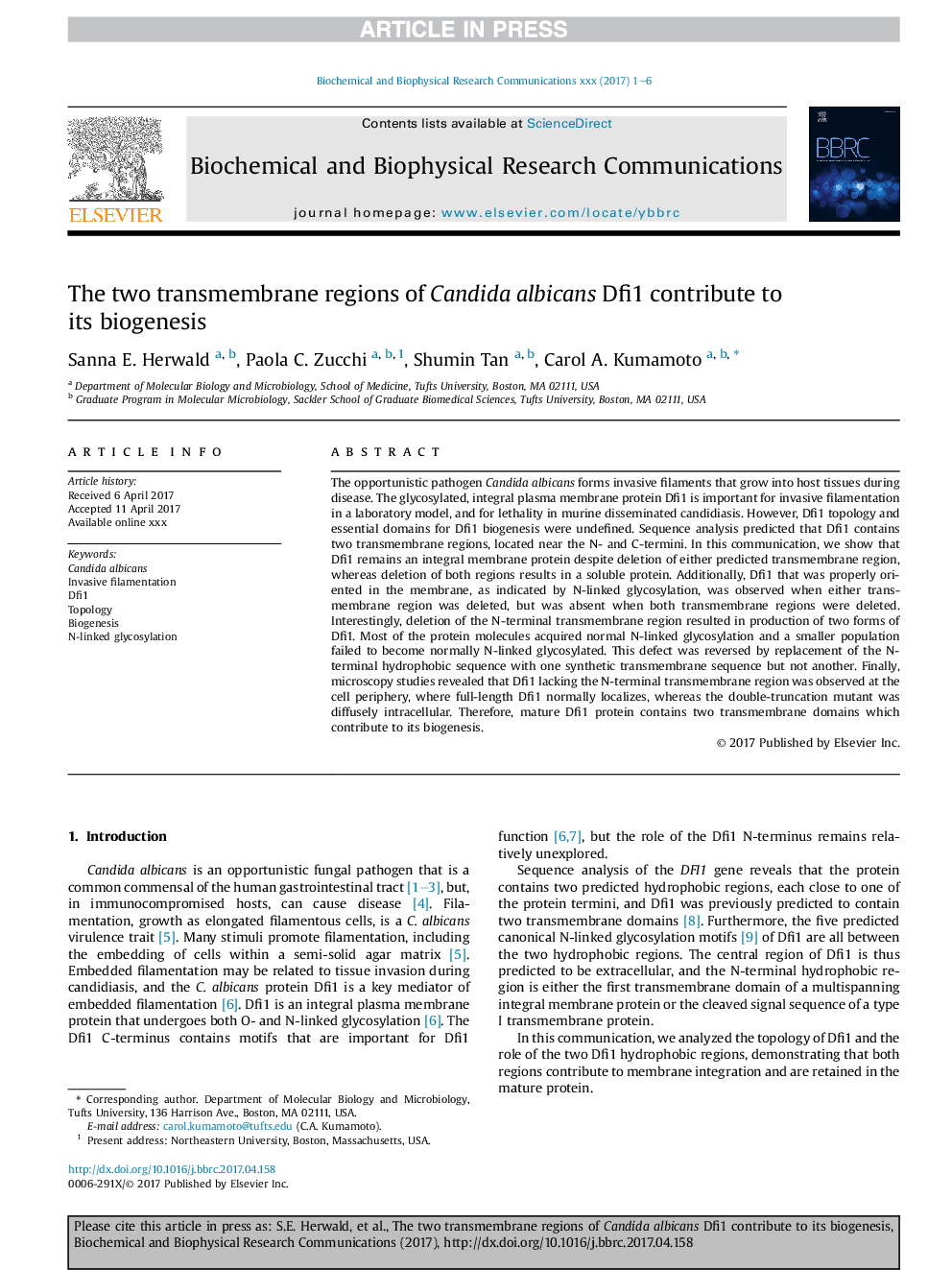| Article ID | Journal | Published Year | Pages | File Type |
|---|---|---|---|---|
| 5505506 | Biochemical and Biophysical Research Communications | 2017 | 6 Pages |
Abstract
The opportunistic pathogen Candida albicans forms invasive filaments that grow into host tissues during disease. The glycosylated, integral plasma membrane protein Dfi1 is important for invasive filamentation in a laboratory model, and for lethality in murine disseminated candidiasis. However, Dfi1 topology and essential domains for Dfi1 biogenesis were undefined. Sequence analysis predicted that Dfi1 contains two transmembrane regions, located near the N- and C-termini. In this communication, we show that Dfi1 remains an integral membrane protein despite deletion of either predicted transmembrane region, whereas deletion of both regions results in a soluble protein. Additionally, Dfi1 that was properly oriented in the membrane, as indicated by N-linked glycosylation, was observed when either transmembrane region was deleted, but was absent when both transmembrane regions were deleted. Interestingly, deletion of the N-terminal transmembrane region resulted in production of two forms of Dfi1. Most of the protein molecules acquired normal N-linked glycosylation and a smaller population failed to become normally N-linked glycosylated. This defect was reversed by replacement of the N-terminal hydrophobic sequence with one synthetic transmembrane sequence but not another. Finally, microscopy studies revealed that Dfi1 lacking the N-terminal transmembrane region was observed at the cell periphery, where full-length Dfi1 normally localizes, whereas the double-truncation mutant was diffusely intracellular. Therefore, mature Dfi1 protein contains two transmembrane domains which contribute to its biogenesis.
Related Topics
Life Sciences
Biochemistry, Genetics and Molecular Biology
Biochemistry
Authors
Sanna E. Herwald, Paola C. Zucchi, Shumin Tan, Carol A. Kumamoto,
